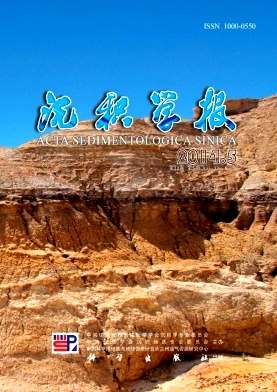|
[1]
|
吴加学. 现代三角洲动力沉积过程与沉积体系发育机制评述:以珠江三角洲为例[J]. 气候研究快报, 2012(1):113-120[Wu Jiaxue. Reviews on sediment dynamics and depositional system in the Modern delta, with a particular emphasis on the Pearl River Delta[J]. Climate Change Research Letters, 2012(1): 113-120] |
|
[2]
|
Galloway W E. Process framework for describing the morphologic and stratigraphic evolution of deltaic depositional systems[C]//Broussard M L. Delta: Models for exploration. Houston: Houston Geological Society, 1975: 87-98 |
|
[3]
|
Wright L D. Sediment transport and deposition at river mouths: A synthesis[J]. Bulletin of the American Geological Society, 1977, 88: 857-868 |
|
[4]
|
Wright L D, Thom B G, Higgins R J. Wave influences on river-mouth depositional process: Examples from Australian and Papua New Guinea[J]. Estuarine and Coastal Marine Science Ⅱ, 1980: 263-277 |
|
[5]
|
Dalrymple R W, Zaitlin B A, Boyd R. Estuarine facies models: Conceptual basis and stratigraphic implications[J]. Journal of Sedimentary Research, 1992, 62(6): 1130-1146 |
|
[6]
|
Walsh J P, Nittrouer C A. Understanding fine-grained river-sediment dispersal on continental margins[J]. Marine Geology, 2009, 263(1/2/3/4): 34-45 |
|
[7]
|
戴志军, 任杰, 周作付. 河口定义及分类研究的进展[J]. 台湾海峡, 2000, 19(2):254-260[Dai Zhijun, Ren Jie, Zhou Zuofu. Research advance in definition and classification of estuaries[J]. Journal of Oceanography in Taiwan Strait, 2000, 19(2): 254-260] |
|
[8]
|
李春初. 论河口体系及其自动调整作用——以华南河流为例[J]. 地理学报, 1997, 52(4):353-360[Li Chunchu. On the estuarine system and its automatic adjustment[J]. Acta Geographica Sinica, 1997, 52(4): 353-360] |
|
[9]
|
王文介, 欧兴进. 南渡江河口的动力特征与地形发育[J]. 热带海洋, 1986, 5(4):80-88[Wang Wenjie, Ou Xingjin. The dynamics and topographic development of the Nandujiang Estuary[J]. Tropic Oceanology, 1986, 5(4): 80-88] |
|
[10]
|
田明, 李春初. 海南岛南渡江干流河口泥沙转运与现代地貌过程[J]. 热带地理, 1994, 12(2):105-112[Tian Ming, Li Chunchu. Sediment bypassing and present geomorphic processes at the main stream estuary of the Nandujiang River in Hainan[J]. Tropical Geography, 1994, 14(2): 105-112] |
|
[11]
|
戴志军, 陈子燊, 欧素英. 海南岛南渡江三角洲海岸演变的波浪作用分析[J]. 台湾海峡, 2000, 19(4):413-418[Dai Zhijun, Chen Zishen, Ou Suying. Analysis of wave actions on coast evolution in Nandujiang River Delta, Hainan Island[J]. Journal of Oceanography in Taiwan Strait, 2000, 19(4): 413-418] |
|
[12]
|
吴创收. 华南流域人类活动和气候变化对入海水沙通量和三角洲演化的影响[D]. 上海:华东师范大学, 2012[Wu Chuangshou. Impacts of human activities and climate change on sediment flux and delta evolution in Southern China basin[D]. Shanghai: East China Normal University, 2012] |
|
[13]
|
龚文平, 吴家信, 莫李帅. 用EOF法分析海口湾东部浅滩区的泥沙来源与泥沙运动[J]. 泥沙研究, 2004(1):63-69[Gong Wenping, Wu Jiaxin, Mo Lishuai. Using EOF method to analyze the sediment sources and transport in the east shallow area of Haikou Bay[J]. Journal of Sediment Research, 2004(1): 63-69] |
|
[14]
|
Subcommittee on the sediment terminology, AGU. Report on the Subcommittee on Sediment Terminology, American Geophysical Union[J]. Trans of AGU, 1947, 28(6): 936-938 |
|
[15]
|
马菲, 汪亚平, 李炎, 等. 地统计法支持的北部湾东部海域沉积物粒径趋势分析[J]. 地理学报, 2008, 63(11):1207-1217[Ma Fei, Wang Yaping, Li Yan, et al. The application of geostatistics to analysis of grain size trend in the Eastern Beibu Gulf[J]. Acta Geographica Sinica, 2008, 63(11): 1207-1217] |
|
[16]
|
Shepard Francis P. Nomenclature based on sand-silt-clay ratios[J]. Journal of Sedimentary Petrology, 1954, 24(3): 151-158 |
|
[17]
|
Lorenz E N.Empirical Orthogonal Functions and Statistical Weather Prediction[M]. Massachusetts Institute of Technology, Dept. of Meteorology, Cambridge, 1956: 49-50 |
|
[18]
|
Dai Zhijun, Liu James T, Fu Gui, et al. A thirteen-year record of bathymetric changes in the North Passage, Changjiang (Yangtze) estuary[J]. Geomorphology, 2013, 187: 101-107 |
|
[19]
|
Pearce A F. Critical Reynolds Number for Fully-developed Turbulence in Circular Submerged Water Jets[M]. Pretoria, South Africa: National Mechanical Engineering Research Institute, 1966 |
|
[20]
|
余常昭. 环境流体力学导论[M]. 北京:清华大学出版社, 1992:187-206[Yu Changzhao. Introduction to Environmental Fluid Dynamics[M]. Beijing: Tsinghua University Press, 1992: 187-206] |
|
[21]
|
陈沈良, 严肃庄, 李玉中, 长江口及其邻近海域表层沉积物分布特征[J]. 长江流域资源与环境, 2009, 18(2): 152-156[Chen Shenliang, Yan Suzhuang, Li Yuzhong. Characteristics of surface sediment distribution in the Yangtze Estuary and its adjacent waters[J]. Resources and Enviroment in the Yangtze Basin, 2009, 18(2): 152-156] |
|
[22]
|
任韧希子, 陈沈良. 黄河下游至三角洲滨海区表层沉积物分异特征和规律[J]. 海洋科学进展, 2010, 28(1):24-31[Ren Renxizi, Chen Shenliang. The differentiation of bottom sediment from the downstream of the Yellow River to the delta nearshore area[J]. Advances in Marine Science, 2010, 28(1): 24-31] |
|
[23]
|
张富元, 章伟艳, 杨群慧. 南海东部海域沉积物粒度分布特征[J]. 沉积学报, 2003, 21(3):452-460[Zhang Fuyuan, Zhang Weiyan, Yang Qunhui. Characterics of grain size distribution of surface sediment in the Eastern South China Sea[J]. Acta Sedimentologica Sinica, 2003, 21(3): 452-460] |
|
[24]
|
王宝灿, 陈沈良, 龚文平, 等. 海南岛港湾海岸的形成与演变[M]. 北京:海洋出版社, 2006:32-43[Wang Baocan, Chen Shenliang, Gong Wenping, et al. The Formation and Evolution of the Embayment Coasts of Hainan Island[M]. Beijing: Ocean Press, 2006: 32-43] |






 DownLoad:
DownLoad: